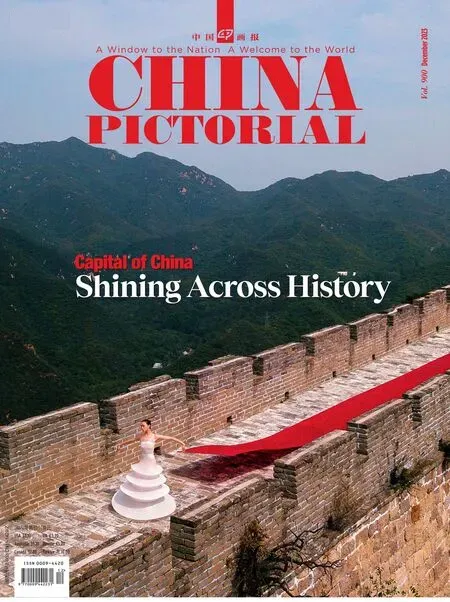Between Water and Colors
Text by Liu Chang
Photos courtesy of Li Qing
He presents a poetic realm characterized by the blending of water and colors,realistic and freehand styles,and the aura of the Jiangnan region.
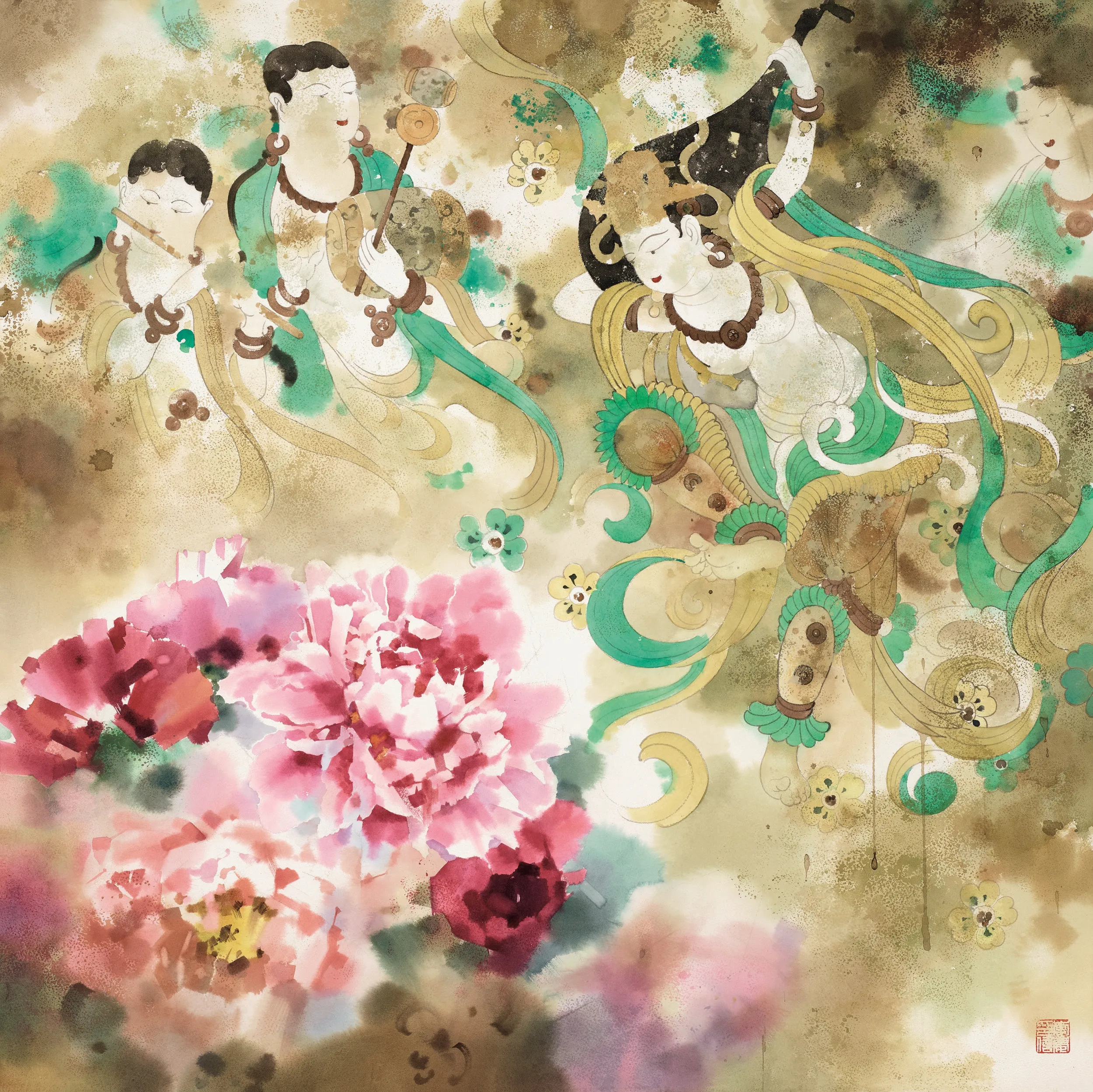
Peony.
J James McBride’s memoir,The Color of Water,takes its title from a conversation McBride had with his mother.In the conversation when he was a child,McBride recalls asking his mother what color God was,to which she replied that “God is the color of water.”
A show devoted to the color of water recently arrived at the National Art Museum of China (NAMOC) in Beijing,showcasing how Li Qing,a Chinese watercolorist,has filled in the space between lines and colors with a poetic world.
Li’s solo show named “Heart Reflection on the Color of Water: Li Qing’s Watercolors Exhibition” displayed more than 100 watercolors to trace his career and art explorations.
Experimental Techniques
Watercolors were first introduced to China during the Qing Dynasty (1644-1911) with the arrival of Western missionaries.Since watercolors and traditional Chinese ink-wash paintings are both created with water-based solutions and take on transparent and luminous textures,artists tend to integrate watercolors with Chinese features to make them more acceptable to the public.
Li was trained to master classical Chinese painting at Nanjing Normal University.While working with watercolors,he also integrates the moist feeling and semi-abstract approach of Chinese ink-wash paintings.By doing so,he presents a poetic world that harmonizes the light and the weighty,and the simple and the extravagant.
According to Li,watercolors,like “visual light music,” are basically created with one try.Due to the fluidity of water,the most difficult part of creating a watercolor is to grasp the subtle boundary between lines and colors.When painting on watercolor paper that may be wet,damp,or dry,artists need to ponder when to leave a gap between water hues,make a clear cut at critical boundaries,and cleverly set up discontinuous lines between objects.That is how Li achieved the space between the tree trunks and the lakeshore inAutumn Rhythm,the background and the character inThe Son,and the flower pots and multi-layered stone platforms inThe Courtyard.
Although postmodern art advocates radical synthesis,the bottom line of watercolors entails a pure and refreshing sense of transparency,Li said.He can integrate ink-wash techniques into watercolor paintings,but not with oil paint and pastel.That is why he can make grapes look juicy,children fair and tender,and cats fluffy.Their fresh and tender textures are gurgling with the vitality of life.
Watercolor paintings used to be perceived as marginalized sketches,suitable only for depicting landscapes and not close-ups of figures and objects.However,Li’s watercolor figure paintingA Child from Afarwon the gold medal at the Fifth Jiangsu Watercolor Exhibition in 2019,evidencing that watercolor figure masterpieces are possible.
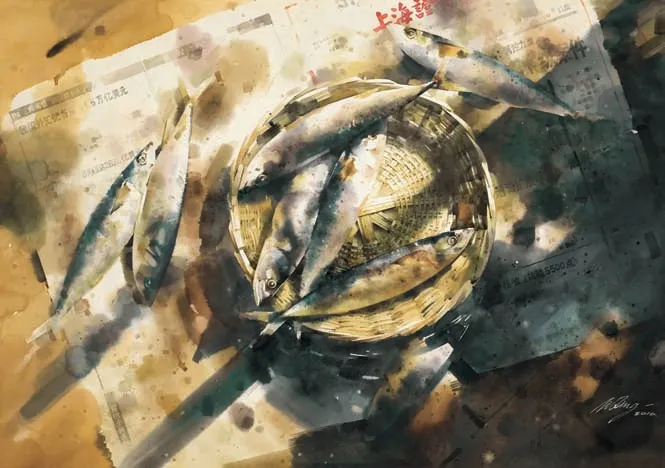
Frozen Fish in the Sun.
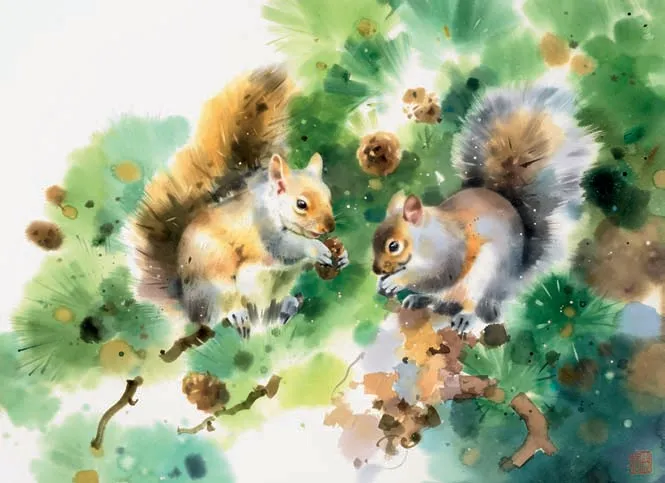
Squirrels in Autumn.
“Li makes good use of water and colors,with diverse forms and rich connotations,” wrote Wu Weishan,director of the NAMOC,in the preface of the exhibition.“He presents a poetic realm characterized by the blending of water and colors,realistic and freehand styles,and the aura of the Jiangnan region.”
Enriched Themes
Figure painting is an essential facet of Li’s watercolor creations,mainly focusing on the Uygur people in Xinjiang Uygur Autonomous Region,exemplified byA Child from Afar.Li argues for the necessity of applying artistic techniques to show respect for the ethnic culture of the Uygur people.
Still life and landscapes are also genres that Li has been working on with avid enthusiasm,especially those that can embody traditional humanistic aesthetics,echoing the beauty of art he pursues.
“When painting,Chinese artists must display their national mentality,” Li said.“Even if they’re using Western painting materials and theories,their artistic concepts must still reflect the beauty of China and the East at large.”
Since 2014,Li has also devoted time to depicting people-to-people exchange and cultural landscapes of countries along the Belt and Road and its surrounding areas,exemplified by his workEchoes from the Silk Road.He is always eager to depict exotic customs while keeping pace with the tide of the times.

Visitors enjoy exhibits at the Liu Haisu Art Museum in Changzhou,Jiangsu Province.
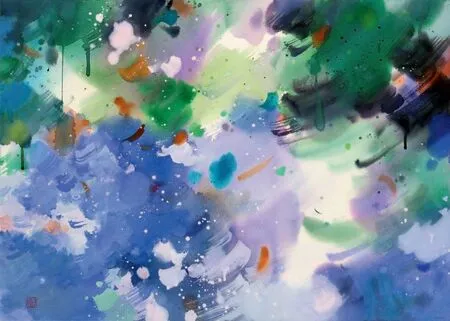
Sky Light and Clouds Reflected in the Water.
Committed to continuously improving his work,Li also serves as director of the Liu Haisu Art Museum in Changzhou,Jiangsu Province,where he engages in professional management and academic planning.According to Li,the museum’s total area of 20,000 square meters is spread throughout 10 floors above ground and one underground floor.It features main exhibition halls on one floor,ordinary exhibition halls on another floor,two floors of boutique exhibition halls with constant temperature and humidity control,professional lecture halls,and public education classrooms.It is also equipped with a modern warehouse system that can realize intelligent and digital management of exhibits and collections.
“Art,an integral part of a city,can inject vitality into its cultural core,” Li said.“An art museum is the best place for a city to ‘get married’ to art.”

